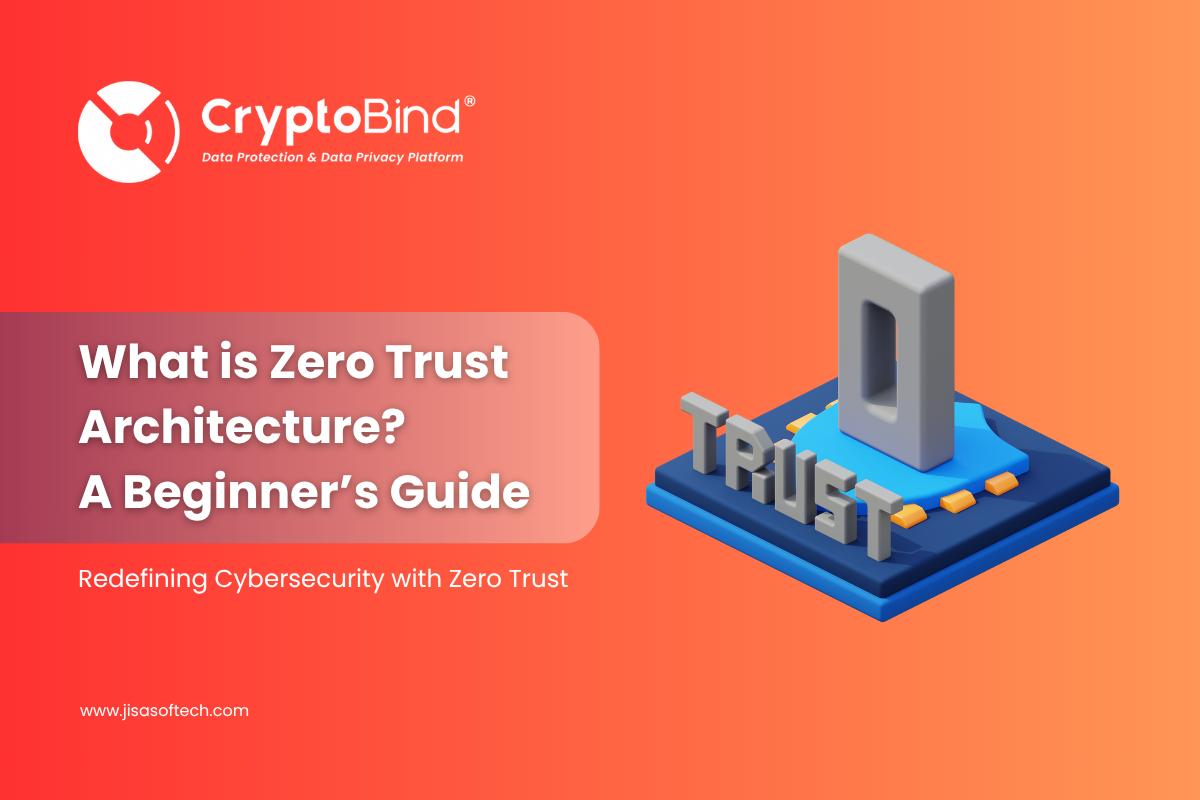What is Zero Trust Architecture? A Beginner’s Guide
As organizations growing more inclined towards digital transformation, the necessity for strong security measures has never been greater. Conventional network security models that draw on perimeter defenses are no longer effective in the hybrid threat environment of the present day. Step in Zero Trust Architecture (ZTA), an innovative cybersecurity strategy that calls upon the conventional “trust but verify” approach. This introductory guide to Zero Trust Architecture will inform you on what ZTA is, its principles, and how it can be effectively implemented.
Zero Trust Architecture Explained
Basically, Zero Trust Architecture is a security model that operates on “never trust always verify.” While most of the models in practice trust everything that is inside the network of organizations itself; ZTA says that YOU never know what its validating for each and every USER and DEVICE trying to see the resource whether inside or outer network.
The shift in paradigm is specifically targeted at the shortcomings of perimeter-based defenses (primarily in cloud computing and remote working environment with advanced cyber threats). By adopting ZTA approach organizations will able to reduce vulnerability, protect sensitive data and provide highest levels of compliance with security regulations.
Key Principles of Zero Trust Security
The basis of Zero Trust Architecture is a group of guiding principles that emphasize security at each level of network interaction. The following are the fundamental Zero Trust security principles:
Verify Explicitly: Authenticate and authorize always based on all available data points, including user identity, location, and device health.
Use Least Privilege Access: Restrict user privileges to whatever is required for their job, lowering the damage potential of breaches.
Assume Breach: Act as though a breach has already happened. This approach puts all systems and processes in place to limit harm.
How Does Zero Trust Network Design Work?
Zero Trust implementation needs a holistic strategy that incorporates technology, processes, and policy. This is how Zero Trust network design functions:
Identity and Access Management (IAM): Strong IAM practices are central to ZTA. This includes using Multi-Factor Authentication (MFA) to ensure that only authorized users gain access.
Micro-Segmentation: Divide the network into smaller segments and restrict access to each segment based on need-to-know principles. This minimizes lateral movement in the event of a breach.
Continuous Monitoring: Regularly monitor user activity, device health, and network traffic to detect and respond to anomalies.
Data Protection: Implement encryption and strict data access controls to safeguard sensitive information.
Zero Trust Policy Enforcement: Use automated tools to enforce security policies consistently across the organization.
How to Implement Zero Trust Architecture
Transitioning to Zero Trust Architecture can seem daunting, but a structured approach can simplify the process. Here’s a step-by-step guide:
1. Assess Your Current Security Posture
Begin by evaluating your existing security infrastructure, identifying vulnerabilities, and understanding where Zero Trust principles can provide the most value.
2. Define a Zero Trust Strategy
Develop a clear strategy aligned with your organization’s goals. This should include a roadmap for implementing ZTA components and achieving Zero Trust compliance.
3. Strengthen Identity and Access Management
Implement robust IAM solutions that include MFA, role-based access controls, and real-time user authentication.
4. Adopt Micro-Segmentation
Segment your network into smaller areas and apply strict access controls for every area. This minimizes the attack surface and reduces possible damage.
5. Utilize Advanced Threat Detection
Implement tools that use artificial intelligence and machine learning to identify threats in real-time and react quickly.
6. Educate and Train Employees
Zero Trust strategy success demands employee acceptance. Hold training workshops periodically to ensure everyone understands his or her responsibility in keeping the system secure.
7. Monitor and Enhance in a Continuous Manner
Zero Trust is not a one-time practice. Monitor your network continuously, make your policies more precise, and evolve as new threats arise.
Benefits of Zero Trust Architecture
Organizations that adopt Zero Trust Architecture can expect a range of benefits, including:
Enhanced Security: By eliminating implicit trust, ZTA reduces the risk of breaches and unauthorized access.
Improved Compliance: ZTA helps organizations meet stringent regulatory requirements by enforcing strict security controls.
Greater Visibility: Continuous monitoring and analytics provide deep insights into user activity and potential threats.
Scalability: ZTA’s principles can be applied across cloud, on-premises, and hybrid environments.
Challenges of Zero Trust Implementation
While Zero Trust Architecture offers significant advantages, its implementation is not without challenges. Organizations may face hurdles such as:
Complexity: Integrating ZTA with existing systems can be technically demanding.
Cost: Initial investments in technology and training may be high.
Resistance to Change: Employees and stakeholders may resist adopting new security measures.
To overcome these challenges, it’s essential to adopt a phased approach, prioritize high-impact areas, and seek support from experienced cybersecurity professionals.
Zero Trust Architecture and Compliance
As cyber regulations become more stringent, adopting ZTA can be a crucial step toward achieving compliance. By implementing robust Zero Trust principles, organizations can demonstrate their commitment to data protection and regulatory adherence.
Key compliance benefits of ZTA include:
Meeting requirements for access controls and data encryption.
Ensuring accountability through detailed logs and audits.
Reducing risks associated with insider threats and data breaches.
The Future of Zero Trust
The fast development of cyberattacks calls Zero Trust Architecture the security norm firms should use. Organizations that embrace Zero Trust Architecture right now will build stronger ability to manage future challenges and protect their digital resources. Because of the growing technologies including AI-based threat detection and identity analytics as well as zero-trust-as-a-service (ZTaaS), the security systems of contemporary businesses have to include Zero Trust Architecture. As these technologies get better, the Zero Trust implementation process will get easier and more effective.
Conclusion
Businesses have seen a paradigm shift in how they perceive security under the auspices of Zero Trust Architecture. Networks can be protected against the highest level cyberthreats of today that remain unknown, by corporations applying its rules and deploying latest technologies, as well as a security culture
Sure, for companies who are beyond the traditional current security, moving into Zero Trust network design is not just a smart strategy but a requirement. If you are a Zero Trust just pivoting (or looking to improve the way you practice) this is the journey to a more resilient and secure future.




